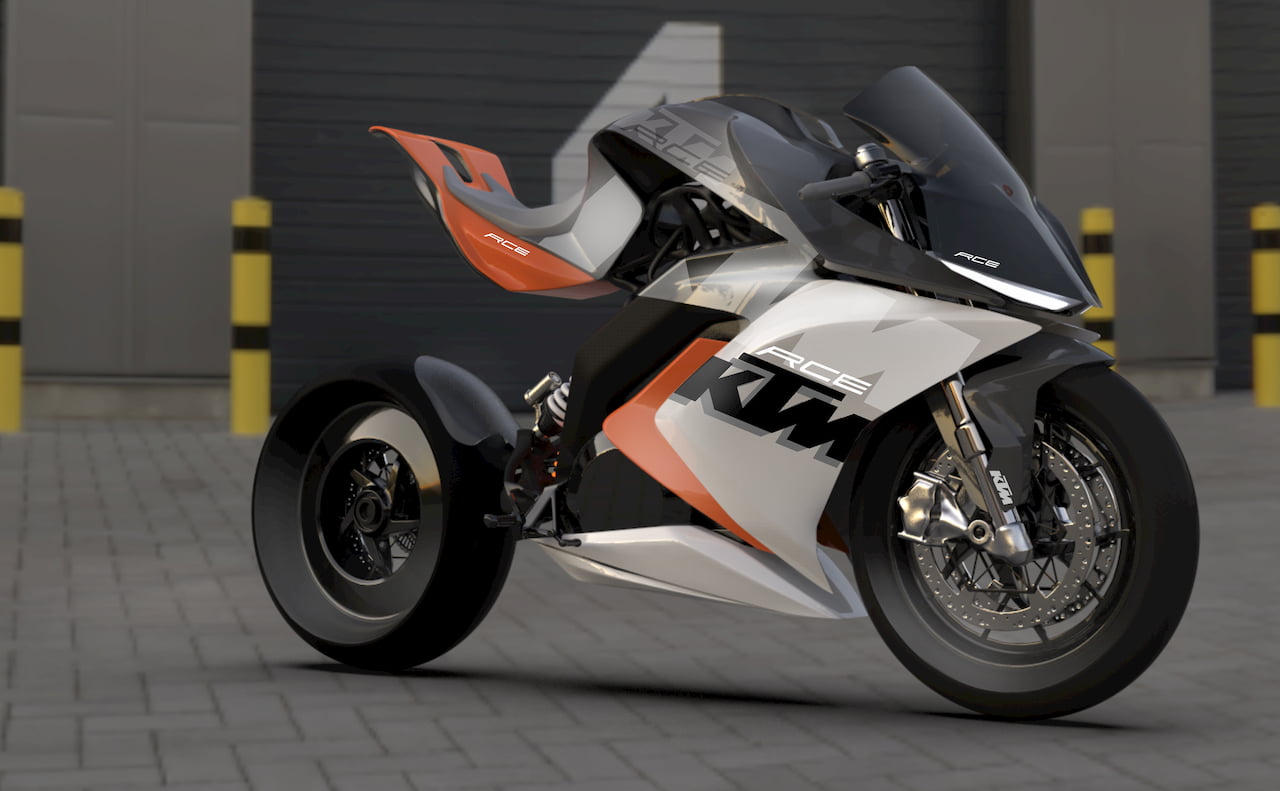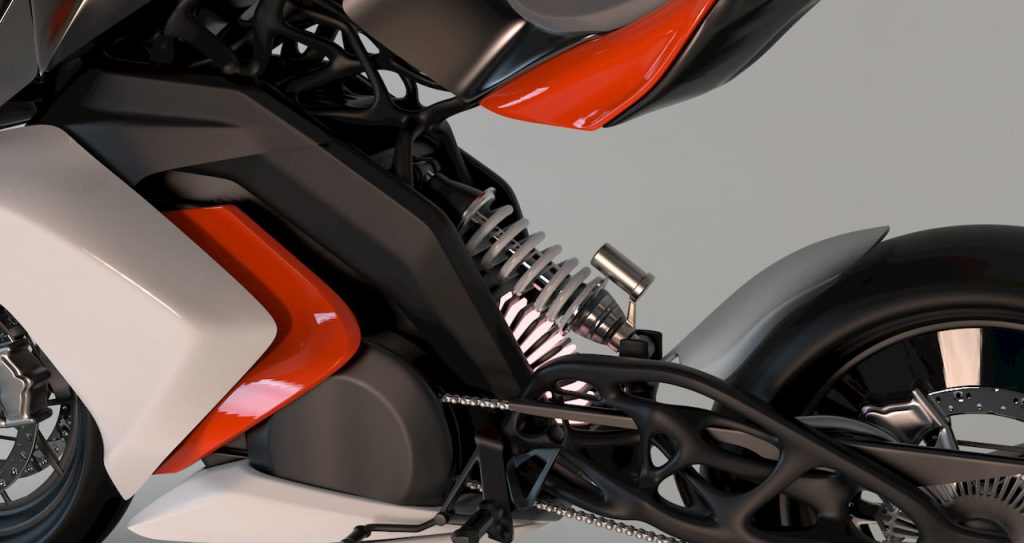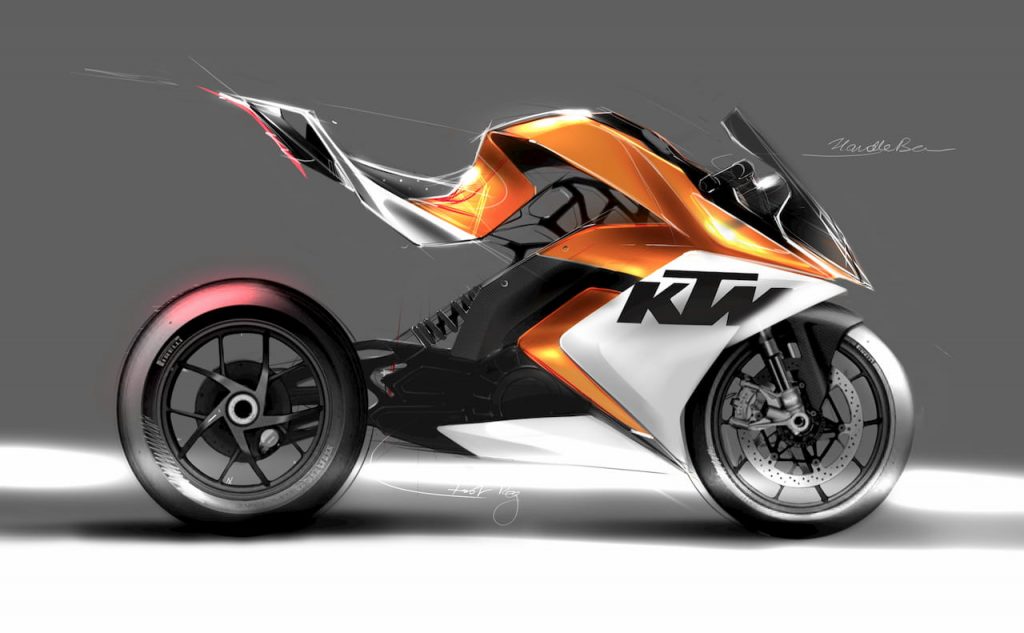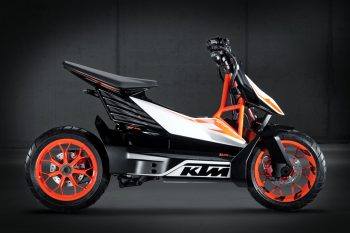Mohit Solanki, pursuing his master’s degree from IDC, IIT Bombay in Mobility and Vehicle designing has imagined a KTM electric motorcycle based on the Austrian RC Series. He did his graduation from NID, Ahmedabad in industrial design, and this is what he told us about his latest project:
Electric Bikes are the Future
Basically, I am focusing on the year 2030. Electric motorcycles are the future. Electric motor technology is getting better everyday and there will be a time when the sales of conventional motorcycles will dip. The gas tank and the engine will be replaced with a battery and a motor.
Inspiration
I am very much inspired by the KTM brand as KTM represents the new era of motorcycles and visionary bike designs. So my intention was to design an electric motorcycle that develops the future design language of KTM. This project is inspired to reach the iconic supersports athletic with the reinforced racy feel of KTM. I studied the brand and the brand identity of KTM – which we call “unmistakably KTM” because of its colours and graphics.
The KTM motorcycle contains a lot of exposed internals and the bike is very much rider focused. If you talk about the graphic parts, it is very refined and they use a lot of solid colours, they avoid gradients, and the graphics complement the form of the bike. I used those bold and bright colours which are contrasting, and punchy graphics that stands out. I studied the KTM RC8 because it was the only super sportsbike which came out from the KTM. RC8 was an iconic bike for so many reasons. Design studio Kiska made this bike like a sculpture with so many details, and the design was ahead of its time.
KTM RC Electric Motorcycle Concept
My objective was to look for the aggressive design that seems natural cutting through the air, increasing downforce when needed and it can reduce drag by incorporation of spoilers. So aerodynamics will play key element in the concept.
The design needed to solve three subjects – drag force, downforce and air brakes. The brief was to reimagine the form language, rider experience of the sports motorcycle of electric era of 2030. I was focusing on the performance, purity of design and experience for the Indian market.
Sketching
After studying the KTM RC8, I came up with the three keywords – monstrous, speedy and agile. Keeping in mind these things, I started with the sketching. I divided the sketching into three stages.
First was the frame exploration. It consisted of different frame exploration designs for packaging of battery, motor and overall frame.
In the second stage, I tried to explore more on the panels – side panels, front panels and tail part. At this stage, I tried to get an overall view about the bike.
In the third stage, I tried to incorporate the different technologies in the bike. The major technology was generative design. The generative design leverages machine learning to mimic nature’s evolutionary approach to design. So in this stage, I fixed my final frame design.
Elements Captured from RC8
KTM RC8 made no attempt to be modest but flaunts its virtue to enthusiast as a naked bike. The RC8 was the first bike to introduce underbelly exhaust in its segment. So this was my inspiration to provide something which is first-time introduced in a certain bike.
In the current scenario, it is into the experimental phase. The generative design is basically used in the car, again in a conceptual mode. By 2030, I see KTM as a brand which brings further innovation and experimentation in designing. I wanted to create a different overall approach with designing a 2030 electric sports bike for KTM.
Design language of the RCE
The design language of RCE is inspired by KTM’s iconic sports bike aesthetics. Between 2020 and 2030, the design and fashion in supersports bikes will change quite a lot. In the RCE, the rider’s position is moved far forward so that the distance between the handlebar and the seat is much shorter. The whole weight distribution of the superbike has moved further forward. There are no daytime lights in the bike, instead sliders are being used to take out the lights when needed. Side panels & the tail lights are aligned & designed in such a way to eliminate the drag force and enhance the power output. Overall design language is much more track oriented & much aggressive than before.
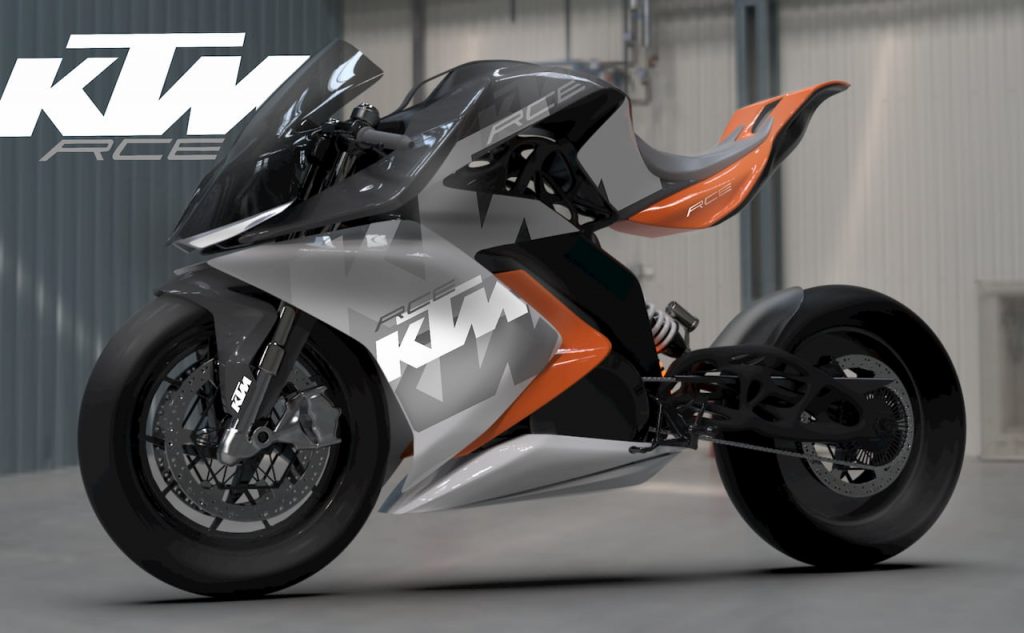
Generative frames are there to replace tank area. I took elements and the design idea of the initial concepts but changed the proportions to enhance the overall stance to enhance the keywords mentioned earlier in the final design. There will be no need for a change to the RCE for a few years, it will take the people a few years to get used to this design, it will remain quite fresh for a certain period of time.
Talking about the generative frame, it is made out of Scalmalloy material, which is an aircraft grade aluminum alloy that is virtually as strong as titanium and which allows the entire frame to weigh just 4 kg. The 3D-printing process enables the use of hollow frame parts that can integrate cables, pipes and attachment points into the motorcycle’s frame. The 3D-printing process enables the use of hollow frame parts that can integrate cables, pipes and attachment points into the motorcycle’s frame. I tried to incorporate all the electric parts and battery units in a single package, my main focus was to keep the unit small and provide space for big air vents to make it look monstrous and agile at the same time.
